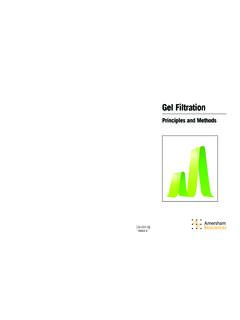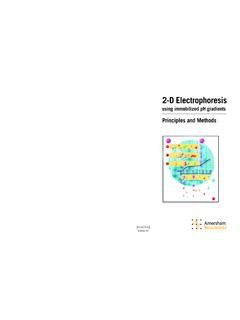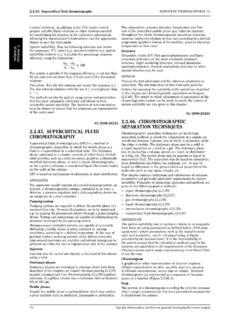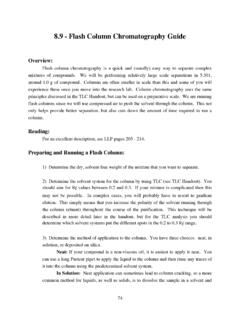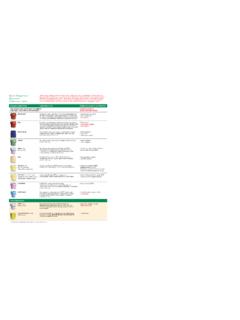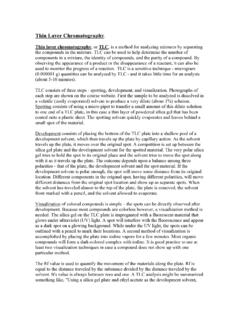Gel Separation In
Found 10 free book(s)Size Exclusion Chromatography Separations Module
asdlib.orgmolecular sieve, and gel exclusion chromatography, is a separation technique used to separate molecules on the basis of size and shape (hydrodynamic radius). Size exclusion chromatography is called gel filtration chromatography because the gel essentially allows for the filtering of molecules from a sample based upon molecular size.
Gel Filtration - Harvard University
kirschner.med.harvard.eduSeparation by gel filtration To perform a separation, gel filtration medium is packed into a column to form a packed bed. The medium is a porous matrix in the form of spherical particles that have been chosen for their chemical and physical stability, and inertness (lack of reactivity and adsorptive properties).
2-D Electrophoresis
www.bu.eduOct 02, 2010 · in 1975. In the original technique, the first-dimension separation was performed in carrier ampholyte-containing polyacrylamide gels cast in narrow tubes. See section 2.1, 'Back-ground to IEF', page 27 for more detail. The power of 2-D electrophoresis as a biochemical separation technique has been recognized virtually since its introduction.
2.2.46. CHROMATOGRAPHIC SEPARATION TECHNIQUES …
www.drugfuture.comseparation methods in which the components of a sample are distributed between 2 phases, one of which is stationary, while the other is mobile. The stationary phase may be a solid or a liquid supported on a solid or a gel. The stationary phase may be packed in a column, spread as a layer, or distributed as a film, etc. The mobile phase may be ...
order of draw - Quest Diagnostics
www.questdiagnostics.comFor serum (no gel) tubes only. For clot to form, keep 10 – 15 minutes tube at room temper-ature for minimum 30 mins. Do not exceed 60 mins. Blood Collection ORDER OF DRAW MIXING CHART SEPARATION Clot Spin Pour into Transport Vial Label with specimen type and patient ID For other blood, serum or plasma separation instructions, see the
Flash Column Chromatography Guide - MIT OpenCourseWare
ocw.mit.edu5) Pick the appropriate column. The amount of silica gel you are going to use determines the size of your column. There is an ongoing debate about whether to use silica columns that are short and wide or ones that are tall and skinny. In 5.301 we will argue that the short, wide columns provide better separation, but this statement may be
Gel Permeation Chromatography (GPC)
www.waters.comIn 1964 John C. Moore, of the Dow Chemical Company, published his work on the preparation of Gel Permeation Chromatography (GPC) and changed how scientists studied synthetic polymers and macromolecules. ... A GPC column is selected based on the goals of the separation, which often ranges from one of maximum speed for screening to that of
Specimen Collection Tubes - Quest Diagnostics
cas2.questdiagnostics.comuse gel tubes for toxicology or drug testing * When using a winged blood collection set for venipuncture and a coagulation (citrate) tube is the first specimen to be drawn, a discard tube should be drawn first. The discard tube must be used to fill the blood collection set tubing’s “dead space” with blood but the discard tube does not need to
SDS-PAGE
microbiology.ucdavis.eduAug 18, 2003 · 3] Pour the resolving gel mixture into the gel plates to a level 2 cm below the top of the shorter plate. 4] Pace a layer of DDI H 2O over the top of the resolving gel to prevent meniscus formation in the resolving gel. 5] Allow resolving gel to stand 30 min at room temperature. 6] Drain the DDI H 2O from top of the resolving gel. Rinse with DDI H
Thin layer chromatography TLC
people.chem.umass.eduThin Layer Chromatography. Thin layer chromatography, or TLC, is a method for analyzing mixtures by separating the compounds in the mixture. TLC can be used to help determine the number of components in a mixture, the identity of compounds, and the purity of a compound.

